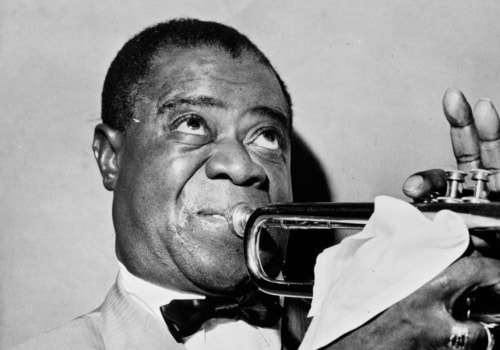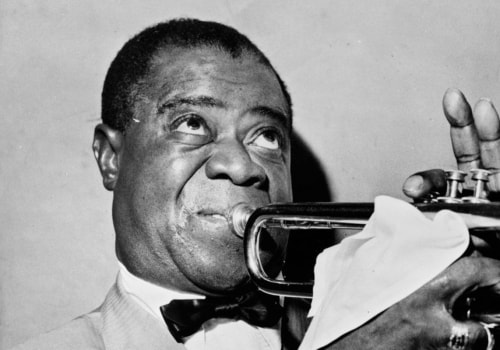Jazz is a musical form, often involving improvisation, that was developed by African Americans and heavily influenced by both European harmonic structure and African rhythms. It originated in the United States in the early 20th century, with New Orleans playing a key role in its development. This city was more diverse than anywhere else in the South, with people of African, French, Caribbean, Italian, German, Mexican, and American Indian descent, as well as English ancestry, all interacting with each other. African American musical traditions blended with others to gradually form jazz from a mix of ragtime, marches, blues and other types of music.
Initially, it was mostly used for dancing. Later on, people began to sit and listen to jazz performances. The evolution of jazz was led by a series of brilliant musicians such as Louis Armstrong, Duke Ellington (listen to Ellington in Duke's music class), Charlie Parker and Miles Davis. Jazz developed a number of different styles, including traditional jazz, swing (listen, for example, to Benny Carter, who started out in swing music, in Benny's music class), bebop, fresh jazz and jazz-rock.
At the same time, it spread from the United States to many parts of the world and today jazz musicians and festivals can be found in dozens of countries. Jazz is one of the largest U. S. exports to the world.
A more precise term could be Afro-Latin jazz since this subgenre usually employs rhythms that have a direct analogue in Africa or exhibit an African rhythmic influence beyond what is normally heard in other types of jazz. The jazz of the swing-era era of the previous decade had challenged other popular music as representative of national culture, with big bands reaching the peak of the style's success in the early 1940s; swing acts and big bands traveled with U. troops during World War II. This fusion of jazz with music from other cultures was a tradition that had existed at least since Dizzy Gillespie mixed bebop with Cuban music in the 1940s. Acid jazz often contains several types of electronic composition (sometimes it includes samples or cuts and live DJ scratching), but it is just as likely to be played live by musicians who often show the interpretation of jazz as part of their performance. It ranges from combining live instrumentation with house jazz rhythms (as exemplified by St Germain, Jazzanova and Fila Brazillia) to improvised jazz more band-based with electronic elements (for example The Cinematic Orchestra, Kobol and the future Norwegian jazz style initiated by Bugge Wesseltoft, Jaga Jazzist and Nils Petter Molvær).Brazilian jazz like Bossa Nova is derived from samba with influences from jazz and other styles of classical and popular music of the 20th century.
Jazz was the popular music of the United States during this period and leaders of bands such as Duke Ellington, Count Basie, Benny Goodman and Artie Shaw became big stars playing for a large audience of dancers. Pianist Brad Mehldau and The Bad Plus have explored contemporary rock music in the context of the traditional jazz acoustic piano trio recording instrumental jazz versions of songs by rock musicians. Latin jazz is jazz that uses Latin American rhythms and is generally understood to have a more specific meaning than simple jazz from Latin America. Jazz is now taught around the world in elite conservatories which continue to produce outstanding young musicians and although it is no longer popular music as it was in the 1930s it retains a dedicated audience of attendees and listeners. It is debatable whether Marsalis' critical and commercial success was a cause or a symptom of the reaction against Fusion and Free Jazz and the resurgence of interest in the pioneering type of jazz in the 1960s (particularly modal jazz and post-bop); however there were many other manifestations of a revival of traditionalism although fusion and free jazz will not be abandoned in any way and will continue to develop and evolve. Jazz is a style of music that began at the beginning of the 20th century mainly with the African-American community which has improvisation and rhythmic invention at its heart. An attempt has been made to define jazz from the perspective of other musical traditions such as the history of European music or African music. Despite the dominance of jazz that ended the Great Depression music has continued to evolve with new styles and subgenres that form as its influence on pop culture continues to resonate over time. Jazz musicians highly value the search for their own sound and style which means for example that trumpet player Miles Davis sounds very different from trumpet player Louis Armstrong (whose sound can be heard in Louis's Music Class).



